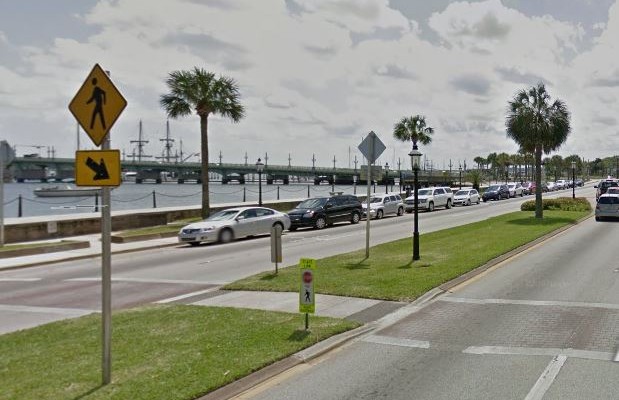
Ask The Traffic School Instructor: Do Pedestrians Always Have The Right-Of-Way?
January 13, 2016
Question: I was attending a work related safety training session and the instructor said that, in Florida, pedestrians don’t have the right of way. Is that true?
Answer: For the most part, no, it isn’t true but it depends on the circumstances.
First off, we have to look at the term “right-of-way.” There’s a lot of confusion about that term and people tend to think in terms of who has the right-of-way in a given situation when, in fact, no one has the right-of-way. The law doesn’t give anyone the right-of-way; it only says who should give up or yield the right-of-way to another. You can’t take the right-of-way, you can only give it to someone else and the law lists the circumstances in which a driver should give up the right-of-way to another.
Let’s look first at what the law requires of pedestrians:
- On roadways where there’s a sidewalk, pedestrians must stay off the paved portion of the roadway reserved for vehicles.
- If there’s no sidewalk, pedestrians are required to walk on the shoulder on the left side of the road facing oncoming traffic.
- Pedestrians are only allowed to cross the roadway at a marked crosswalk or at an unmarked crosswalk at an intersection. (Even if it’s not marked, the area next to an intersection is considered to be a crosswalk.)
- Pedestrians are required to obey all traffic signals and signs just like drivers.
- Even if they’re crossing at a marked or unmarked crosswalk, pedestrians are required to give up the right-of-way if a vehicle is approaching so closely that it wouldn’t be possible for it to safely stop in time.
Now let’s look at those times when drivers are required to give up the right-of-way to pedestrians:
- Drivers are required to yield the right-of-way by slowing or stopping, if necessary, when a pedestrian is crossing the street in a marked or unmarked crosswalk.
- If a pedestrian is crossing the street at a crosswalk and is on the driver’s side of the road or will be on the driver’s side of the road by the time the driver gets there, the driver is required to slow and stop, if necessary, for the pedestrian to pass.
- On a multi-lane roadway, if a driver ahead has stopped for a pedestrian in the crosswalk, drivers approaching in the other lanes must also stop until the pedestrian has safely crossed.
- When a driver is entering the roadway from a parking lot, driveway, or alley, the driver must yield to pedestrians on the sidewalk before proceeding.
- When turning a corner, drivers must yield to pedestrians who are already in the crosswalk.
Special circumstances:
If a blind or visually impaired pedestrian, using a white cane or guided by a guide dog, is attempting to cross the street, whether at a crosswalk or not, all traffic in both directions must come to a complete stop.
Watch for children:
Watch out for children, especially near schools, parks, and residential zones. Kids are in their own little world and they don’t care what the law says.
Vulnerable road users
A new law went into effect in Florida a couple of years ago that lists those who are regarded as vulnerable road users. Vulnerable road users include:
- Pedestrians, including those working on the roadway
- Users of bicycles, mopeds, or scooters
- Skaters and skateboarders
- Horse drawn carriages
- Motorcyclists
- Someone riding an animal
- Users of electric mobility assistance devices
- Users of wheelchairs
- Tractors or other vehicles designed for farm use
The new law requires motorists who are involved in a crash with a vulnerable road user to stop and render aid. Those who fail to do so will face severe penalties.
The lists above don’t include every instance covered under the law, just the basic ones. To see what Florida law says about pedestrians, read: The 2015 Florida Statutes – 316.130 Pedestrians; traffic regulations.—
